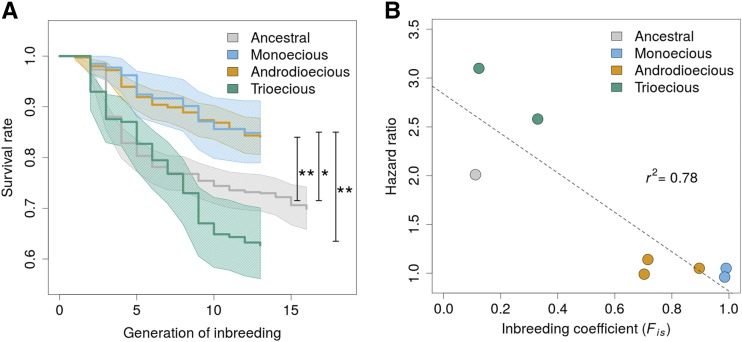Figure 3.
(a), Kaplan-Meier estimates of survival rates (1 minus risk of lineage extinction) are shown for the laboratory adapted ancestral population (gray line) and the experimentally evolved populations, with shaded areas representing 95% confidence intervals. Hermaphrodites were selfed for 13-16 generations and the proportion of surviving lineages recorded. Simulations of the extent to which lineage extinction in the trioecious population is due to picking segregating females or fog-2(q71) heterozygous hermaphrodites is shown in Supplementary Figure S2. Significant differences in the risk of extinction to evolved monoecious populations, which represent the condition of no inbreeding depression, or ancestral population are shown as lines: * p-value < 0.05, ** p-value < 0.005. In (b), the tendency for populations with higher inbreeding after 50 generations of experimental evolution to have a lower risk of extinction is revealed by a negative correlation (p-value < 0.005) between inbreeding coefficients and hazard ratios, in which the monoecious populations were used as reference (shown in blue). Coefficient of determination is shown.

